Block Libraries
Block Libraries in Relyence RBD enable you to store single blocks for repeated usage in your RBDs within Analyses.
Blocks stored in a Block Library can be Blocks or Redundant Blocks. For each block in the Block Library, you can store its Properties. Once a Block is stored in the Block Library, it can be used in any RBD.
You can update the Block Library as needed and then push those changes out to all the places that use the Library blocks. Data Pushes are controlled by you, and you can also set permissions as to who can update Block Libraries and perform Pushes.
Opening a Block Library
To open a Block Library, click Libraries in the Sidebar and select Block. Note that if you have more than one Block Library, the Block option will expand to show them, and you can simply click the one you want to open.
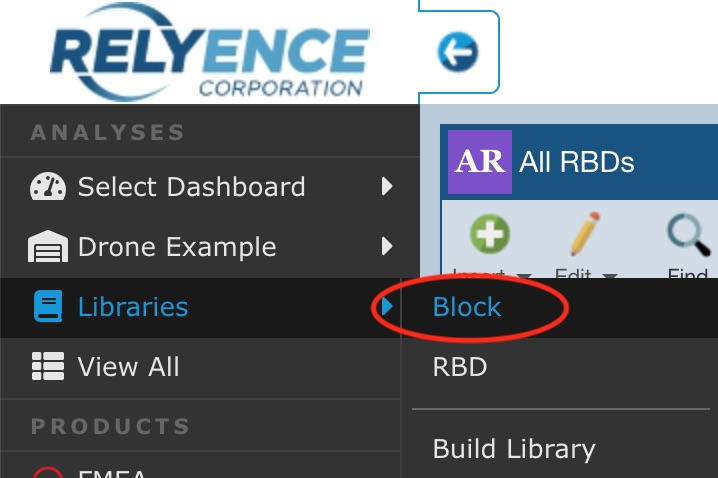
The Block Library displays the Block Table pane on the left with a list of all blocks included in the Block Library and the Properties pane on the right with the properties of the selected block.
Notice that the background when you are in your Block Library is yellow to make it easy to distinguish from your RBDs in your Analysis, which has a blue background.
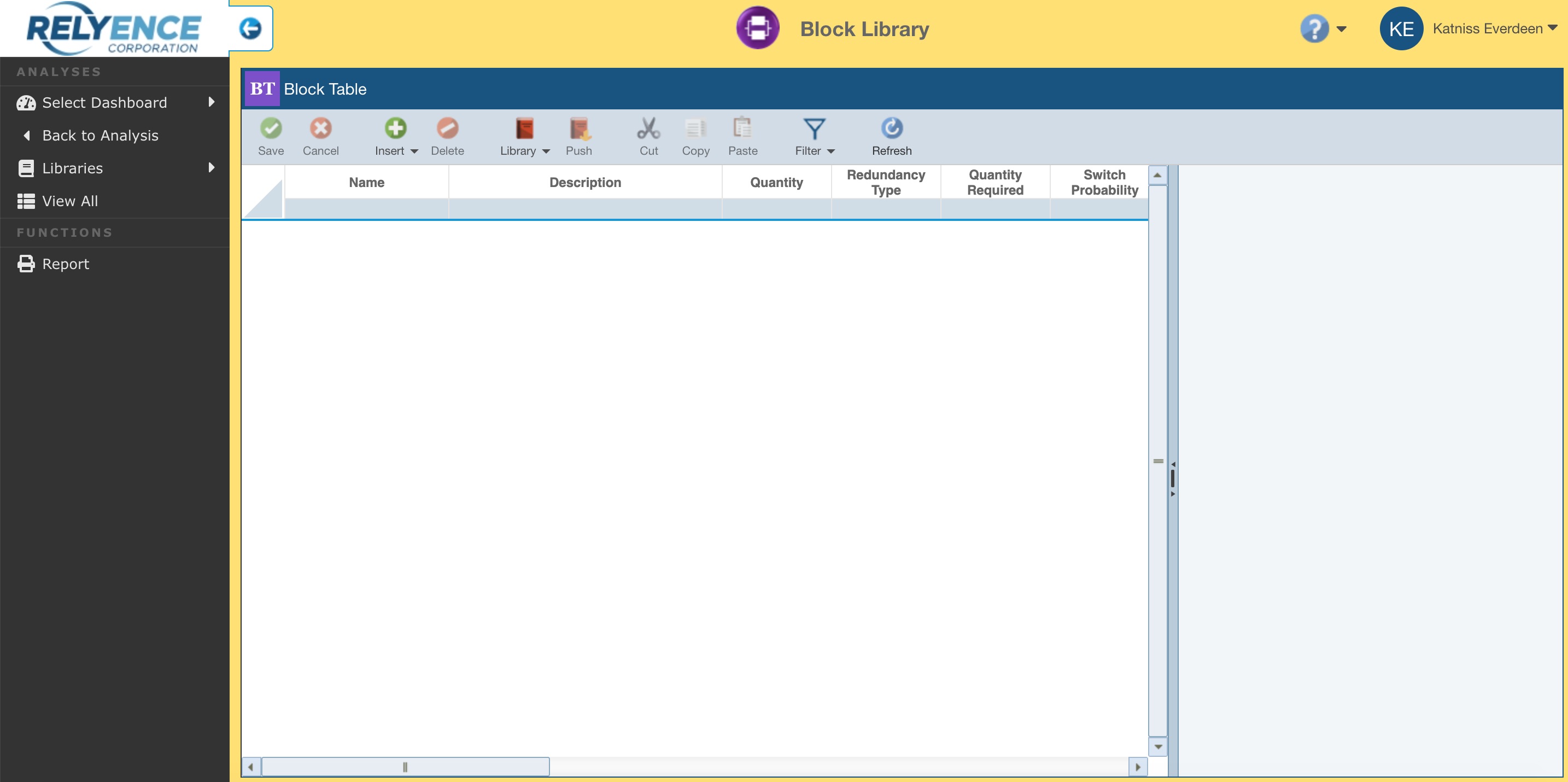
Adding Blocks Directly to a Block Library
To insert a block, from the toolbar, click the dropdown arrow on the Insert button.
- To insert a non-redundant block, click Block. The new block will be automatically inserted in the Block Table.
- To insert a redundant block, click Redundant Block. The new redundant block will be automatically inserted in the Block Table.
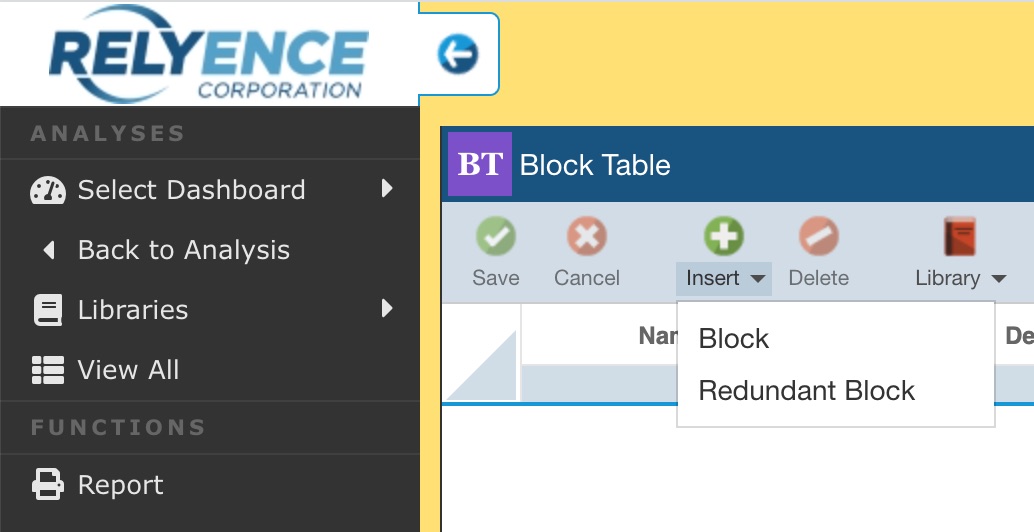
Below is an example of a newly added Block.
.jpg)
In the Properties pane, for each block or redundant block, enter details including Name, Description, and quantitative inputs such as Quantity, various Failure Parameters, and others.
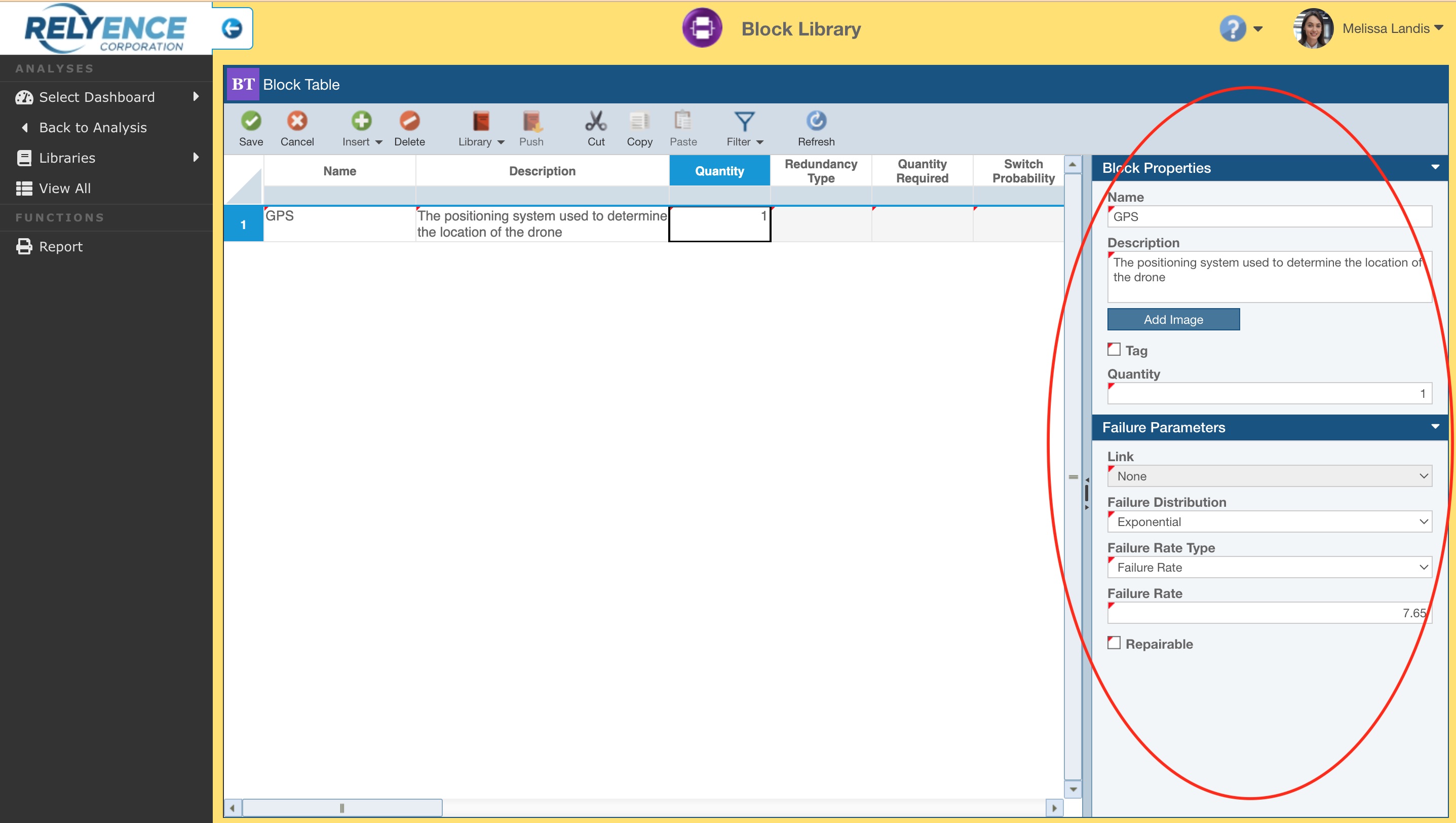
Click Save in the toolbar to save the changes for the new block or redundant block.
Click Back to Analysis in the Sidebar menu to return to your Analysis.
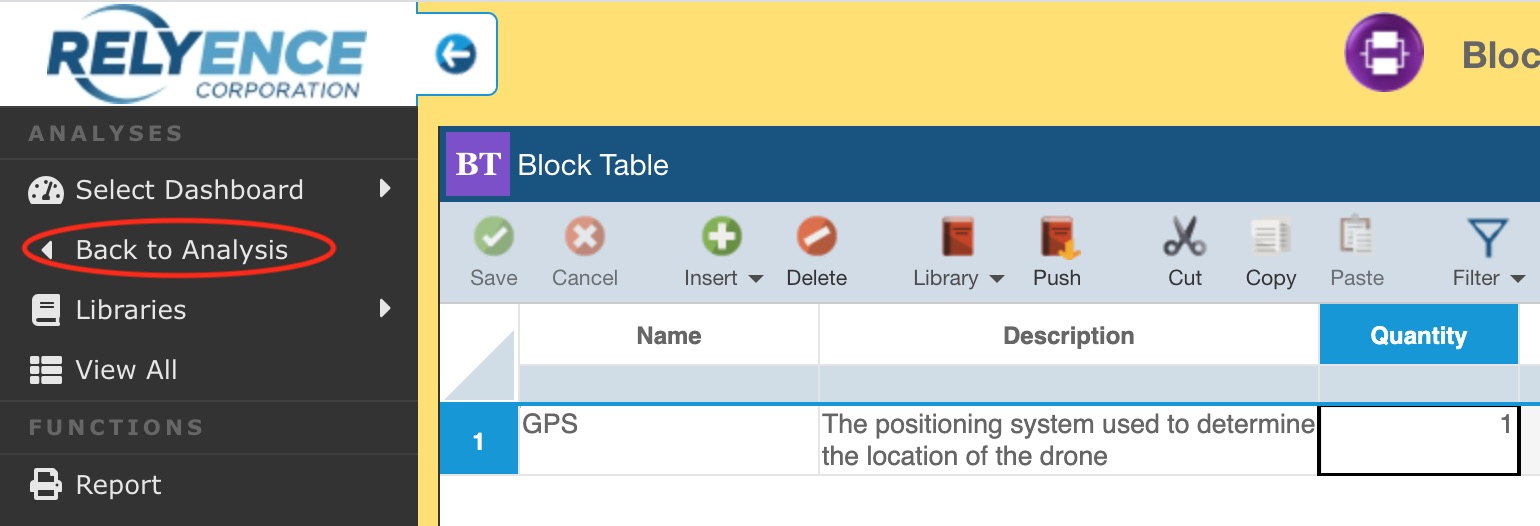
Building up the Block Library from your RBD
The most common method of building up your Block Library is adding information to the Block Library from a completed RBD in an Analysis.
To add RBD block data to a Block Library, select the block you wish to add, and click Add to Block Library from the Library toolbar button drop down.
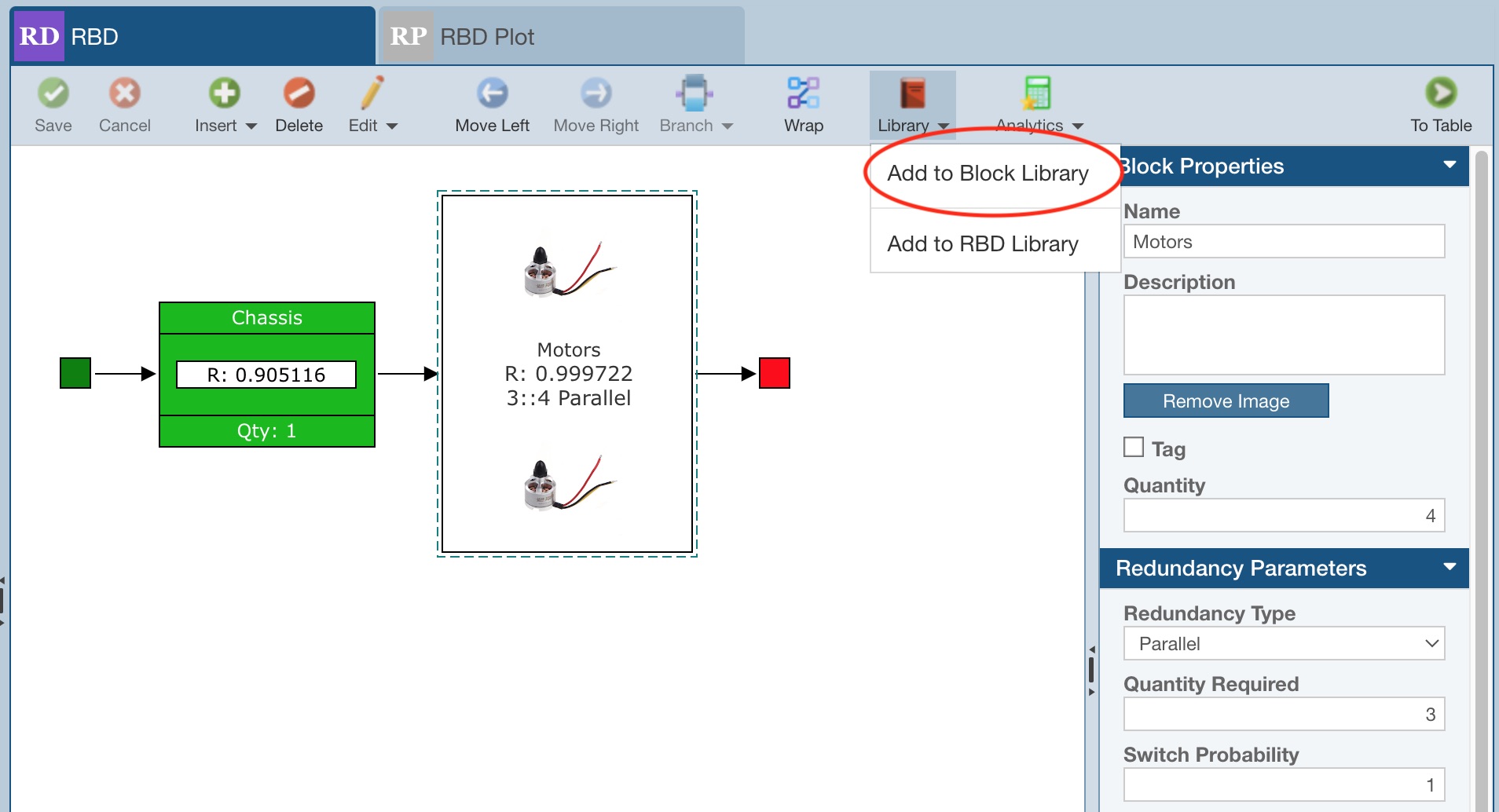
If you have more than one Block Library, the Library dialog appears, which allows you to select the preferred Block Library. Once selected, click OK.
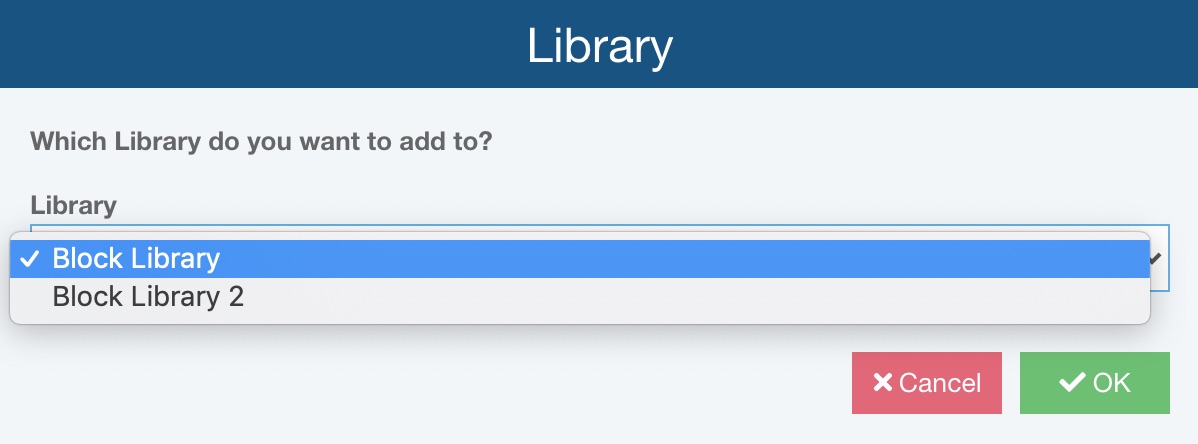
Otherwise, the Add to Block Library dialog appears.
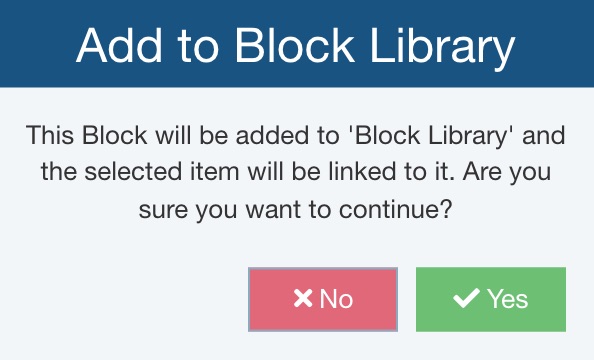
Click Yes to add the block to the Block Library.
If the block is linked to a Prediction Subsystem / Part or Weibull Data Set via the Link field in the Properties, the Add to Block Library dialog appears and indicates "This Block has links to another module. If you add it to the Library, the links will be removed. Are you sure you want to continue?" Click Yes to add the block to the Block Library.
The Add to Block Library dialog appears once the data in the Block Library has been updated.
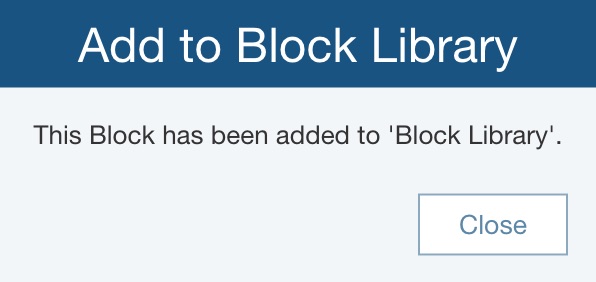
Click Close to dismiss the confirmation dialog.
Upon opening the Block Library from the Sidebar as shown above, the selected block will have been added to the Block Library for use in any RBD.
In the Analysis, note in the RBD and Properties windows that the link icon indicates the block is linked to the block in the Block Library. In the Properties pane, the Unlink option is available to clear the link to the Block Library.
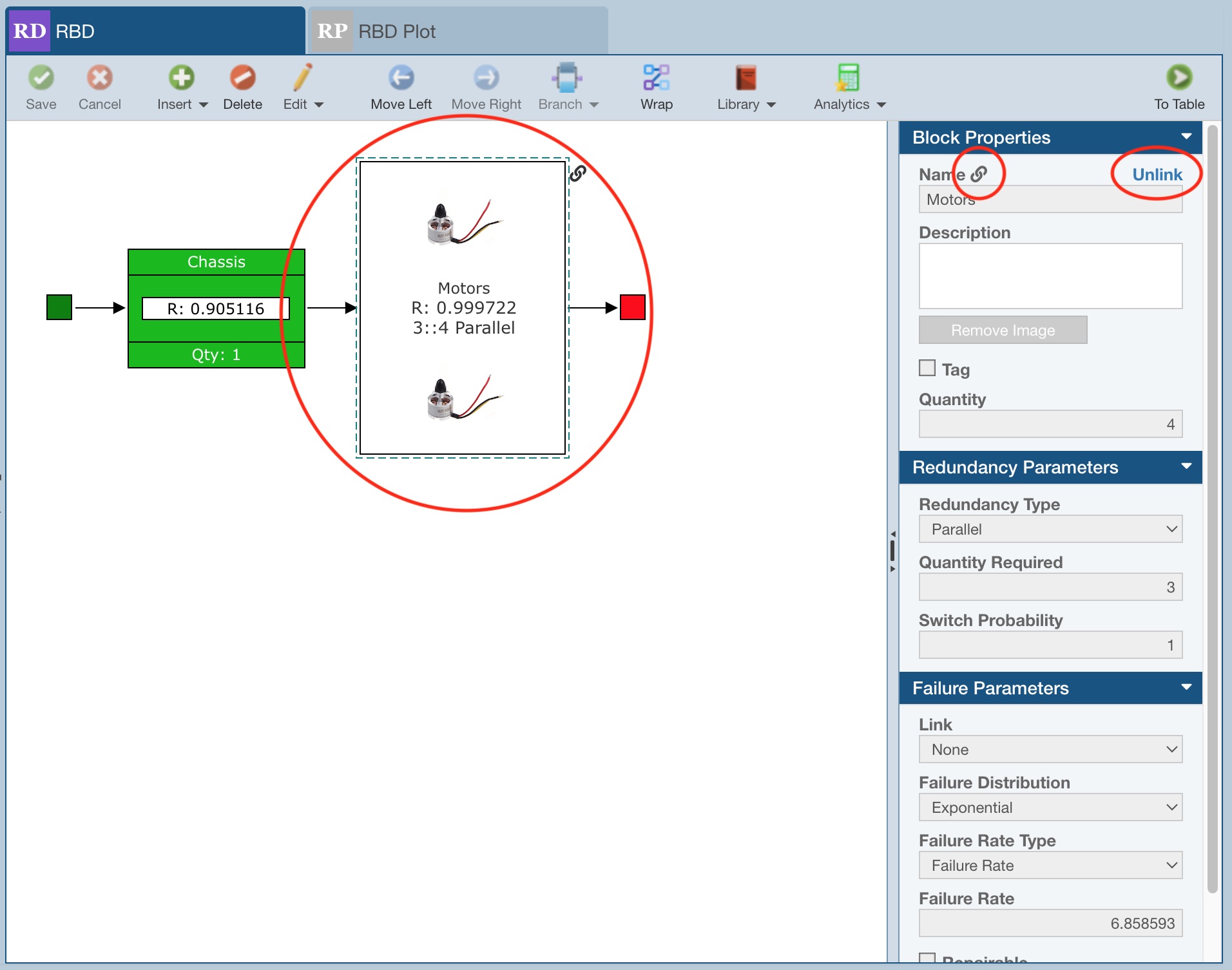
You can also click Go to Block Library as another way to access the Block Library.
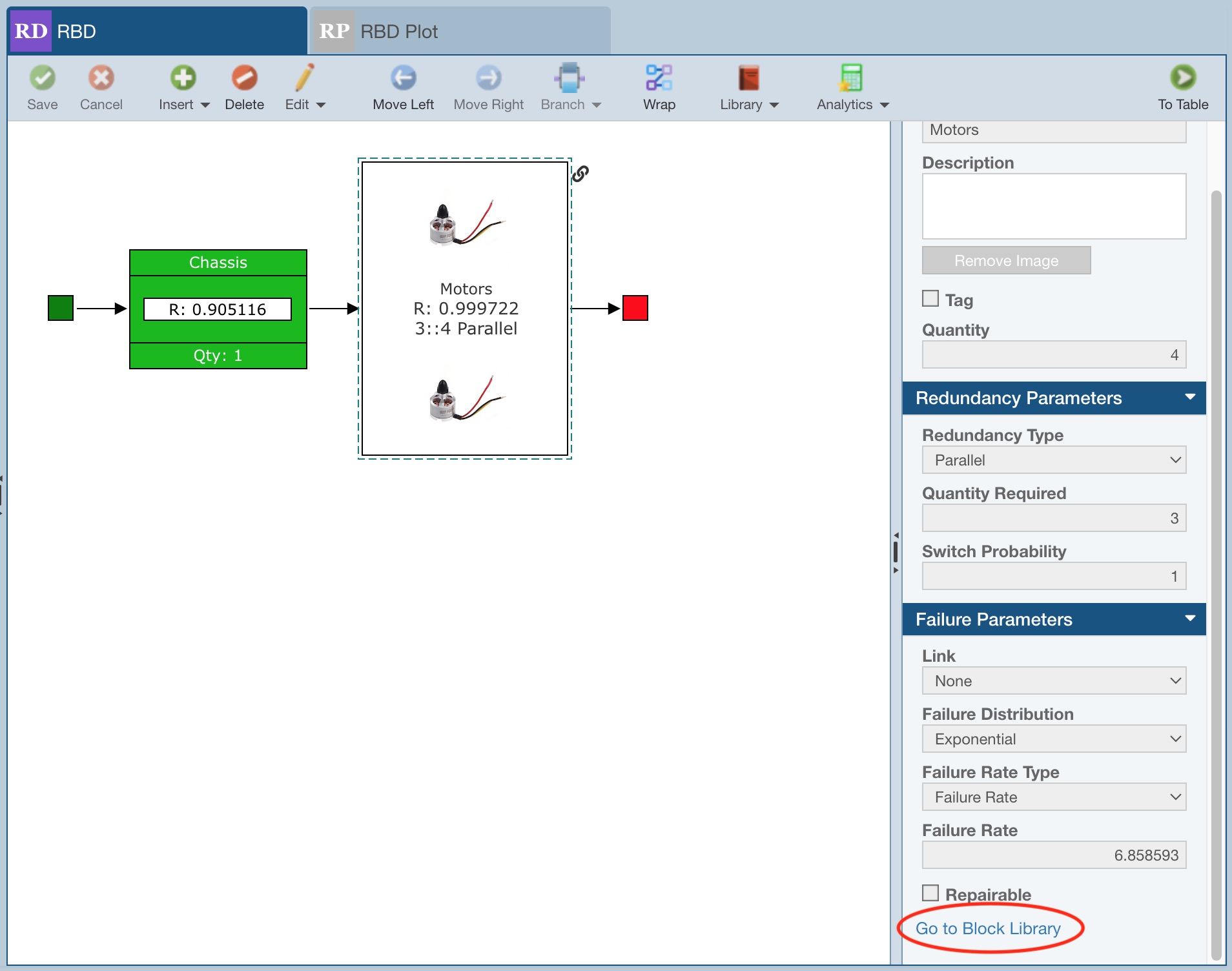
The steps above explain how to add a single block to a Block Library from within an Analysis. Note that you can also build a new Block Library to store all blocks from the Analysis by using the Build Library option from the Libraries menu in the Sidebar. Building a Block Library with the blocks from your Analysis is explained in the Building a Block Library from an Analysis topic of this guide.
Using a Block Library when performing Block Diagram Analysis
The power of the Block Library becomes apparent when you utilize it when performing your block diagram analysis. As you are working on your block diagram analysis, you can search the Block Library using the built-in search capabilities to locate blocks and block data stored in it and pull that data into your current RBD. As your Block Library grows, the effort required to build your RBDs can be significantly reduced.
In the toolbar, click the dropdown arrow next to Insert and click Block from Library to search the Block Library or Libraries.
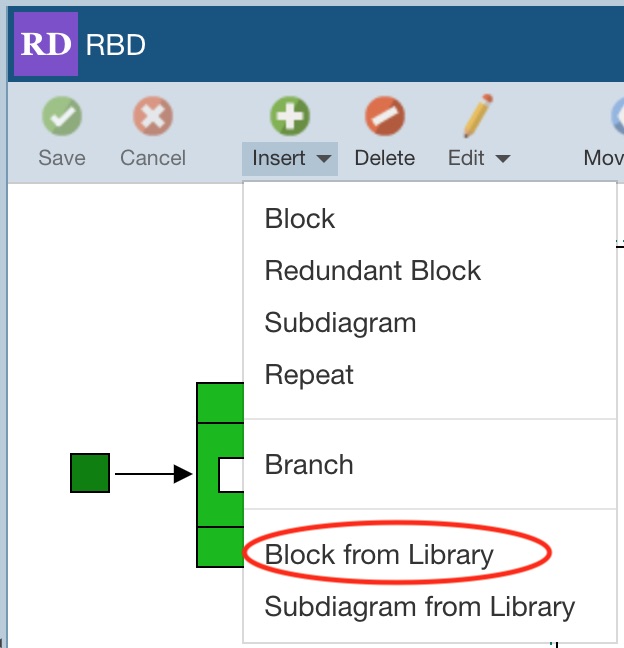
The Search Blocks dialog appears.
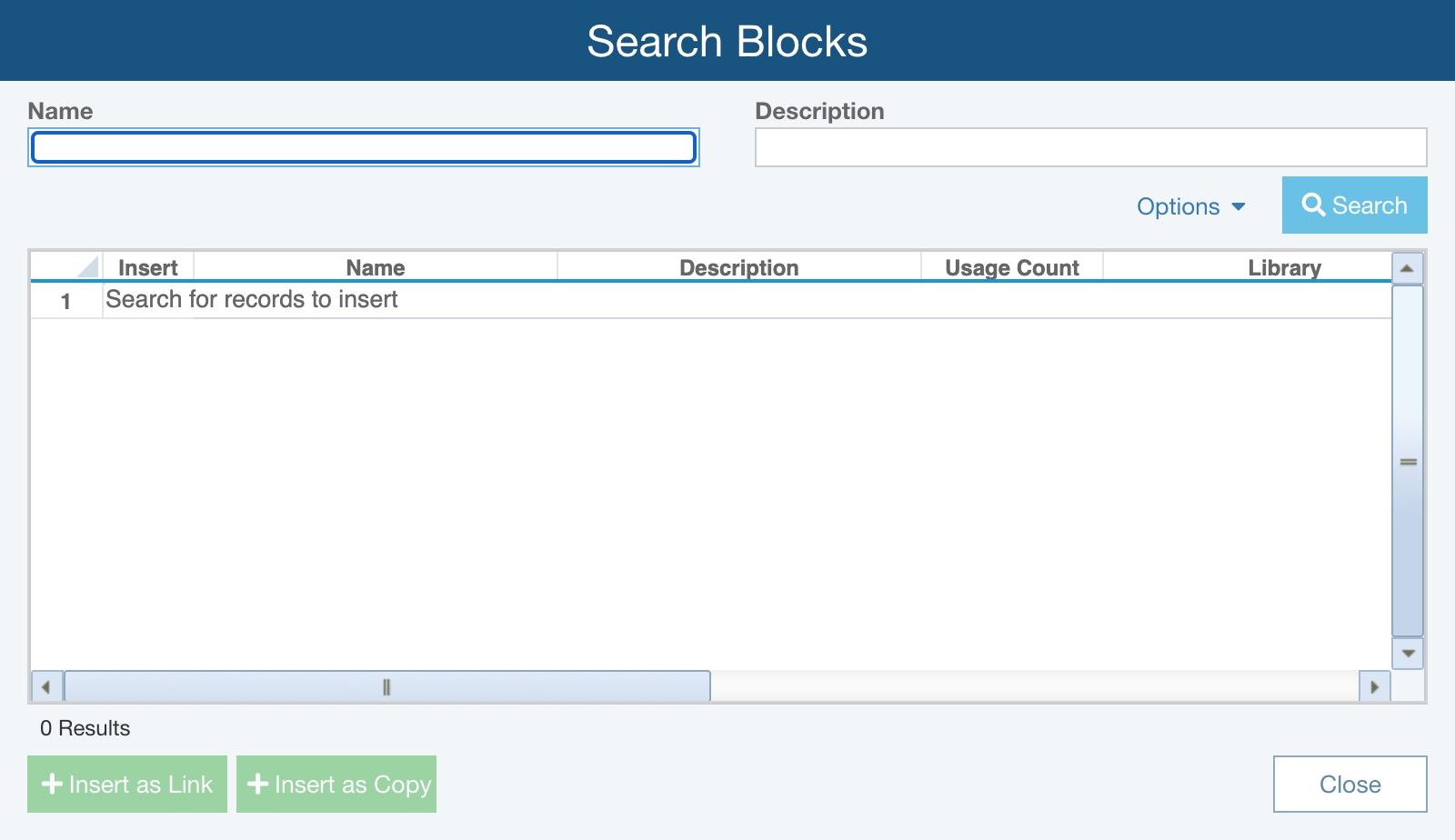
You can perform a Block Library search using Name and/or Description.
In the Search Blocks dialog, enter in a portion of the text, or the full text, in the Name and/or Description fields.
As needed, use the Options link to establish your preferred sorting option.
Use the Sort By options to select your preferred sort order:
- Usage Count - sorts based on the count of number of times the library item is use across Analyses
- Name - sorts alphabetically based on the library item Name
Click the Search button to start the Block Library search. The list of matches will appear in the table. The search results table includes other information: other related block data, the usage count (the number of times the particular block is used in your block diagrams), and which Block Library the match is from. The table is sorted by Usage Count in descending order by default, unless you opt to sort by Name.
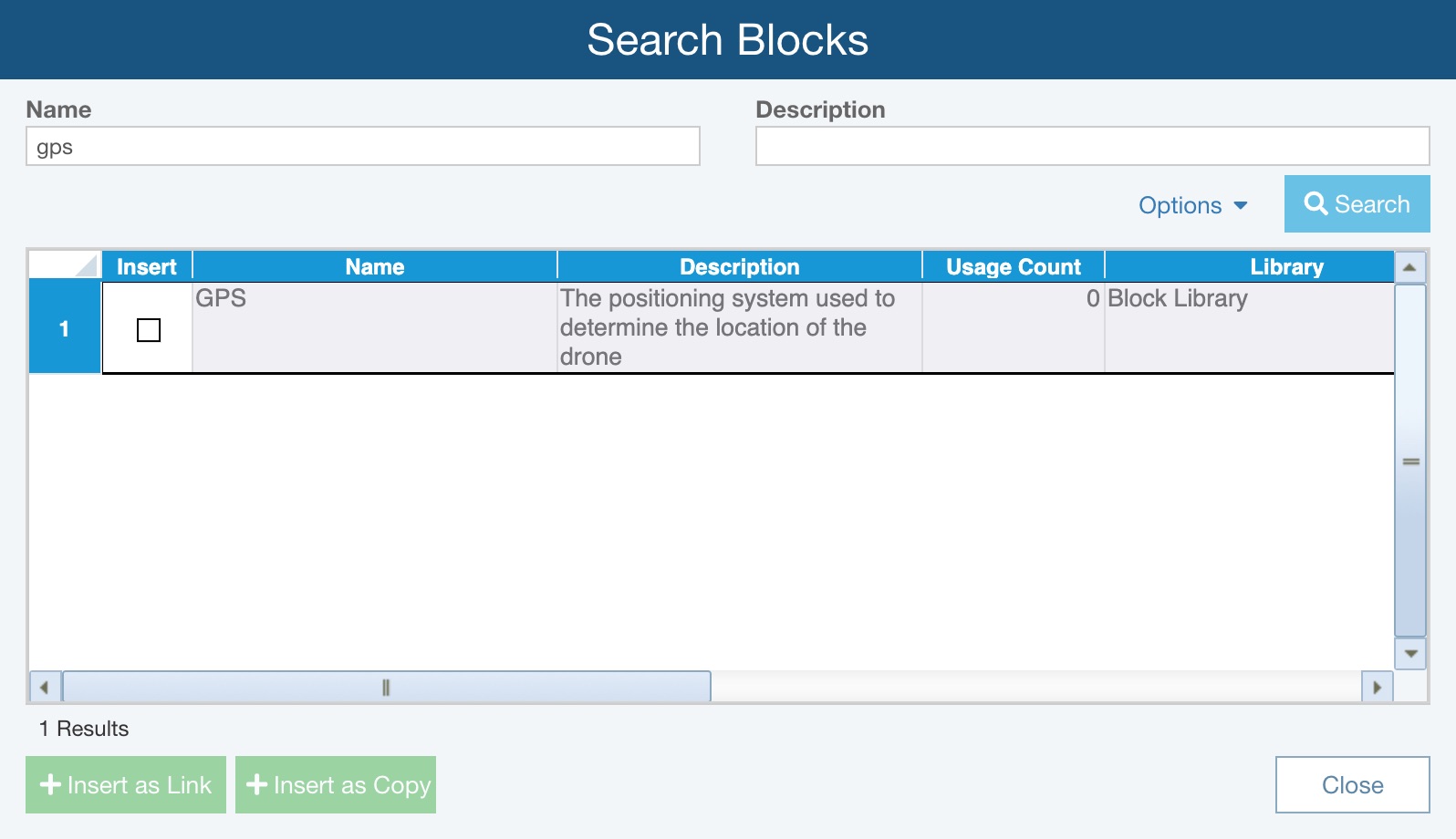
Select the item or items you wish to insert into your block diagram by selecting the Insert checkbox.
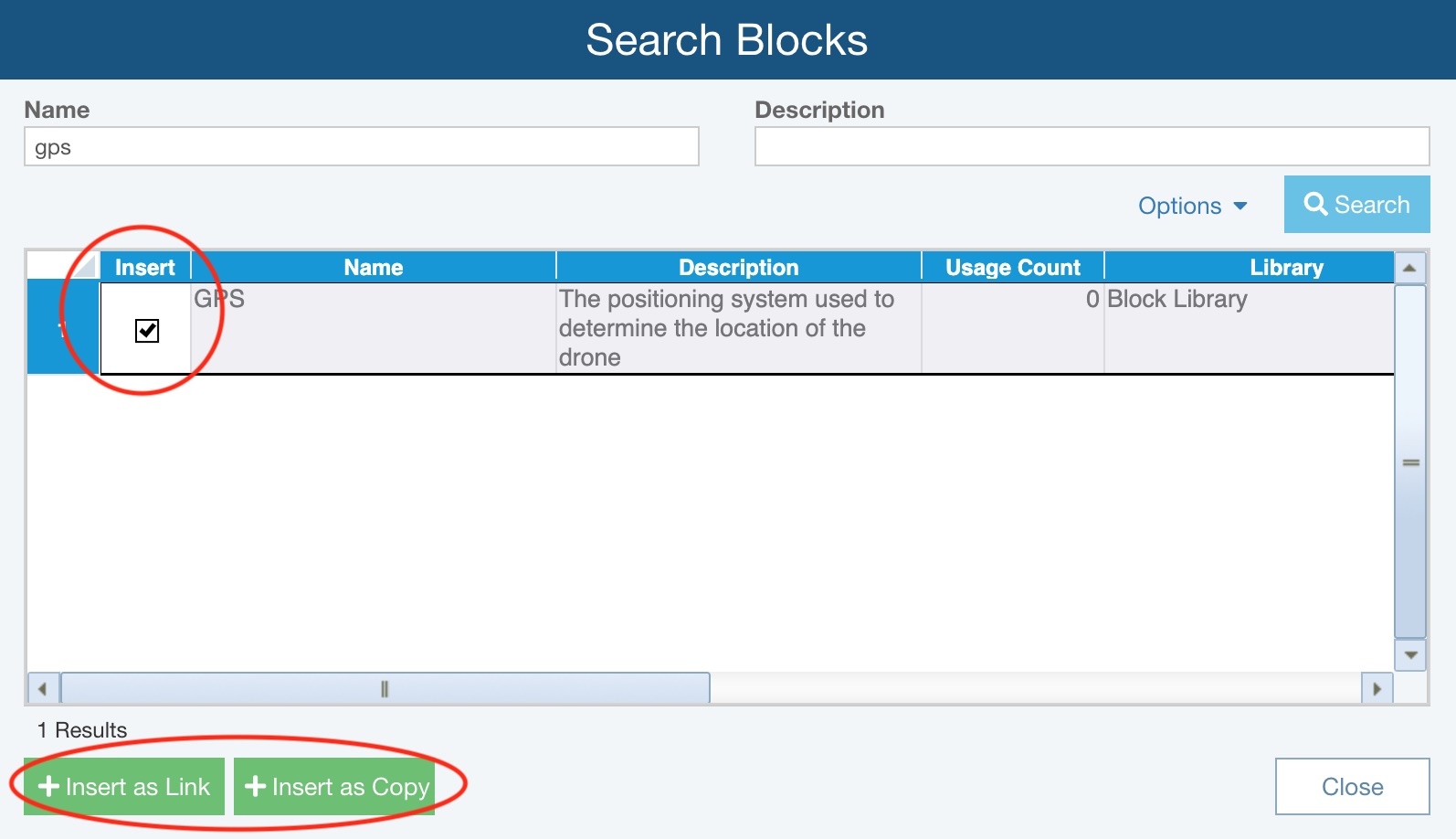
Click Insert as Copy if you want to insert the selected block as a new block which is not linked to the original block in the Block Library.
Or, click Insert as Link if you want to insert the selected block as a new block linked to the original block in the Block Library.
Click Close to close the Search Blocks dialog and return to the block diagram in the Analysis or RBD Library.
If you used the Insert as Link option, upon review of the Properties of the newly added block from the Library, you will see it is noted as linked with the icon next to the Name and next to the graphical block. From the Properties, you can click Go to Block Library to go and review the block in the Block Library, if needed. Click Unlink to remove the link between the block in the Analysis and the stored block in the Block Library; once unlinked, any updates made to the block in the Block Library will not be applied to the block in the Analysis or RBD Library when updates are pushed.
If you used the Insert as Copy option, upon review of the Properties of the newly added block from the Library, there is no indication of a link to the Block Library and the block will behave like any unlinked block.
Pushing out Block Library updates
Another powerful feature of Block Libraries is in keeping all your block data tied to the Block Library in sync. For example, you may have a block in the Block Library that is used in multiple places in one block diagram and even in multiple block diagrams across one or more Analyses or RBD Libraries. If the failure and/or repair data, for example, changes for that Block, you can change the data once in the Block Library and use the Block Library Push feature to propagate that change to all uses of the Block in the block diagrams.
You manage the Push function, so you are in control of how and when the updates are made to your block diagram Blocks. For example, you may want to let your teammates know about a data push prior to initiating. Or, you may want to only push the changes at certain times, perhaps weekly or monthly. You can find details regarding controlling Push updates in the Setting Permissions section of Managing your Users, Groups, and Permissions.
To perform a push, open the Block Library and make necessary changes to any Blocks and click Save in the toolbar to save the changes.
Next, click Push from the toolbar.
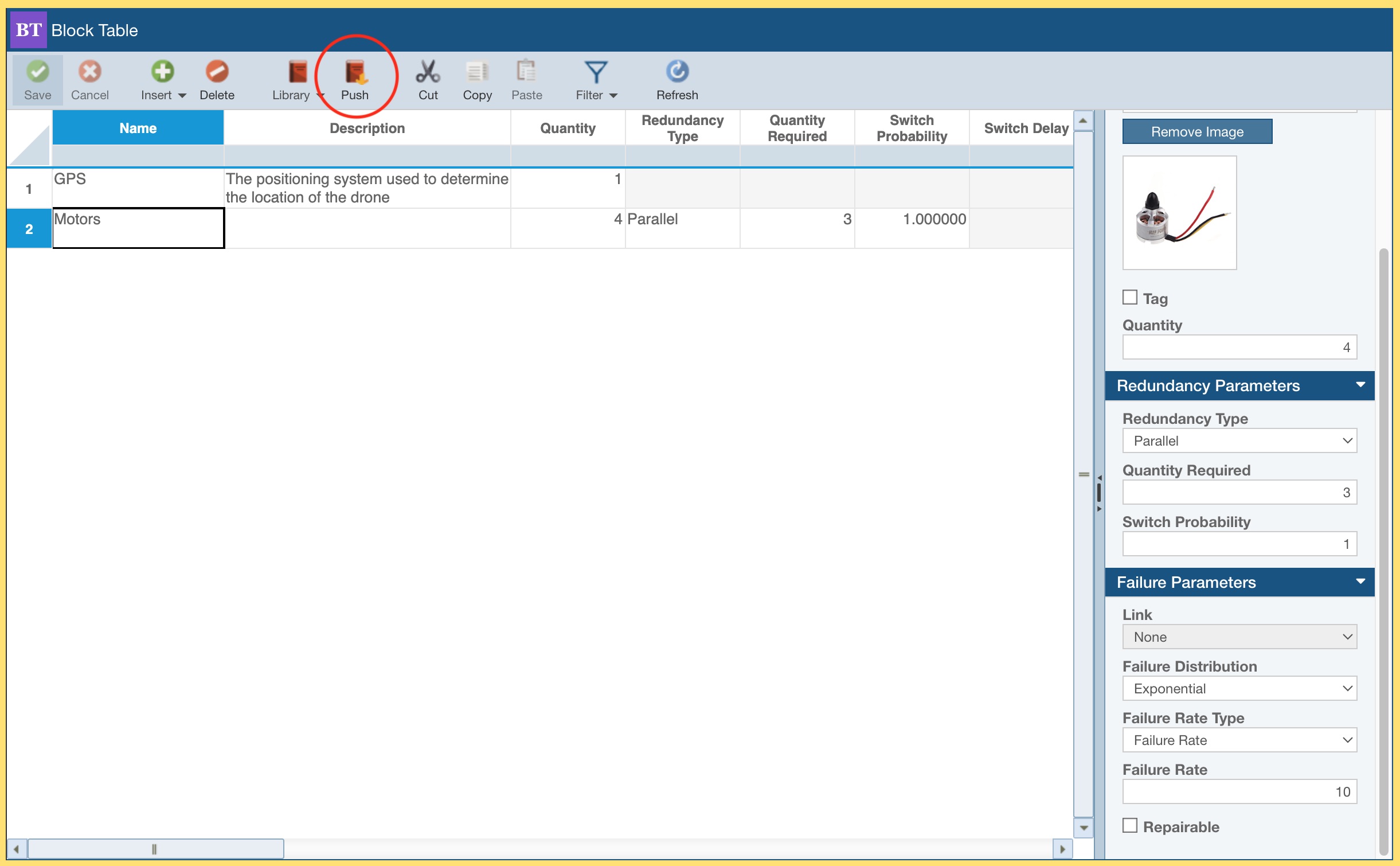
If there are no changes to be pushed, the dialog will indicate this. In this case, click the Close button to close the dialog.

Otherwise, the Push Library Changes dialog appears.
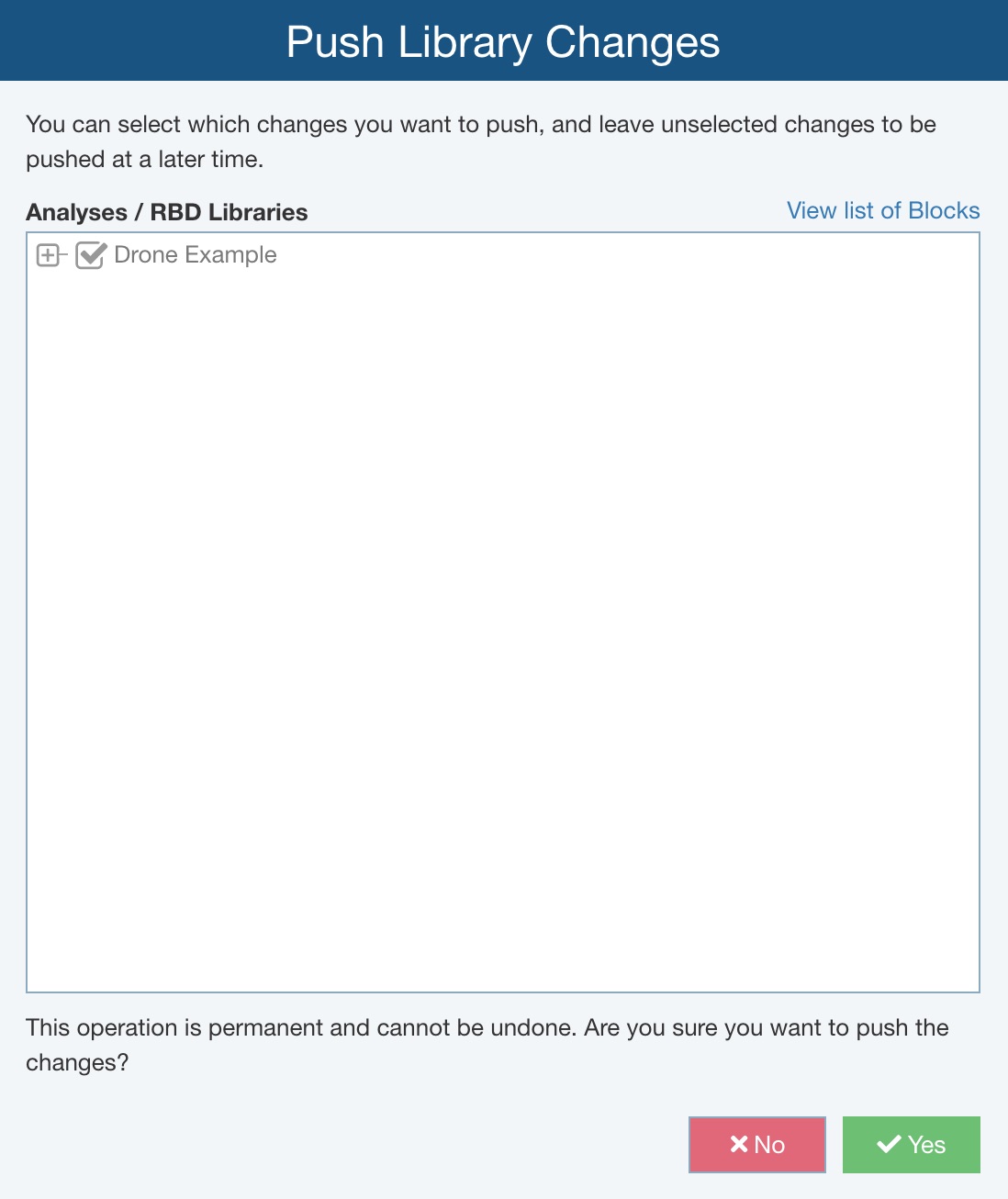
The dialog will display a list of all the Analyses, Revisions, and RBD Libraries that will be updated with necessary change to blocks. Review the list and select or deselect the Analyses, Revisions, and RBD Libraries which should be updated by the Push. When you want to proceed and complete the Push, click Yes, otherwise click No to return to the library.
All updates to your block diagram Blocks tied to Block Library information will automatically be made.
Once the Push is complete, the Push Library Changes dialog appears and then you can review where changes were made in any Analysis, Revision and RBD Library.

When you have completed reviewing, click Close to close the dialog.
Click Back to Analysis in the Sidebar menu to return to your Analysis or click Libraries>RBD and choose the RBD Library to open it.
Viewing data ties to Block Libraries
You can view usage of Block Library data at any time by opening the Block Library, selecting a Block, and clicking View Usage from the Library toolbar button drop down list.
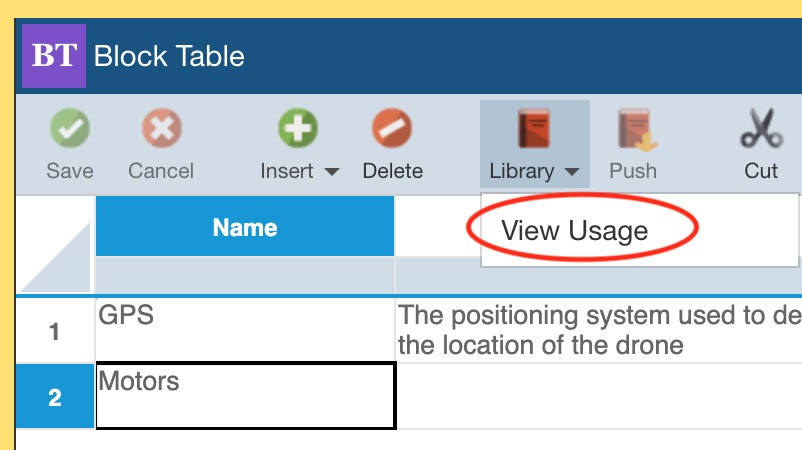
The Block Library Usage dialog appears with the list of Analyses, Revisions, and RBD Libraries where the Blocks from this Block Library are used.
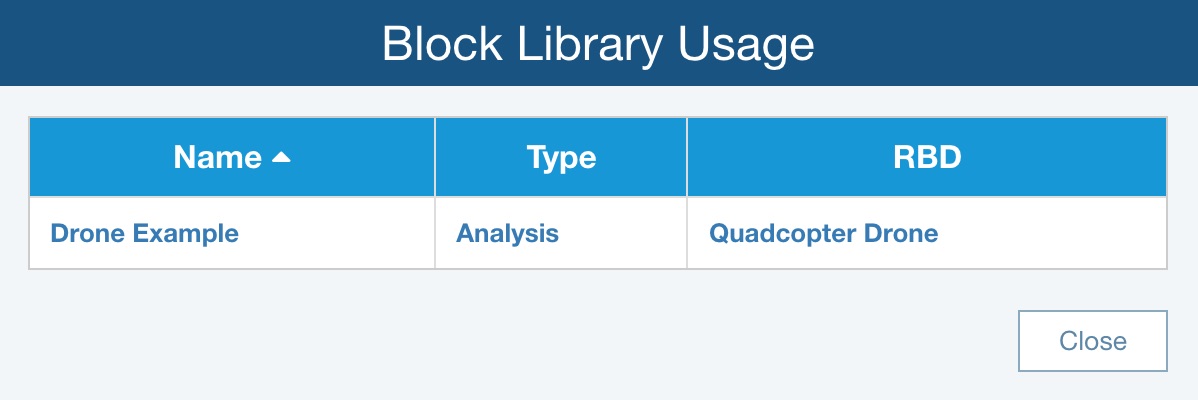
Click Close when finished viewing.
Creating Multiple Block Libraries
Relyence will create and maintain a single Block Library for you. You can rename this Block Library, or create additional Block Libraries using the Manage Analyses function which appears in the Account Management dropdown menu in the upper right of the Header Bar.

For more details, see the Using the Manage Analyses Function topic of this guide.
New Block Libraries can also be created from the View All dialog; for more details, see the Using the View All Function topic of this guide.